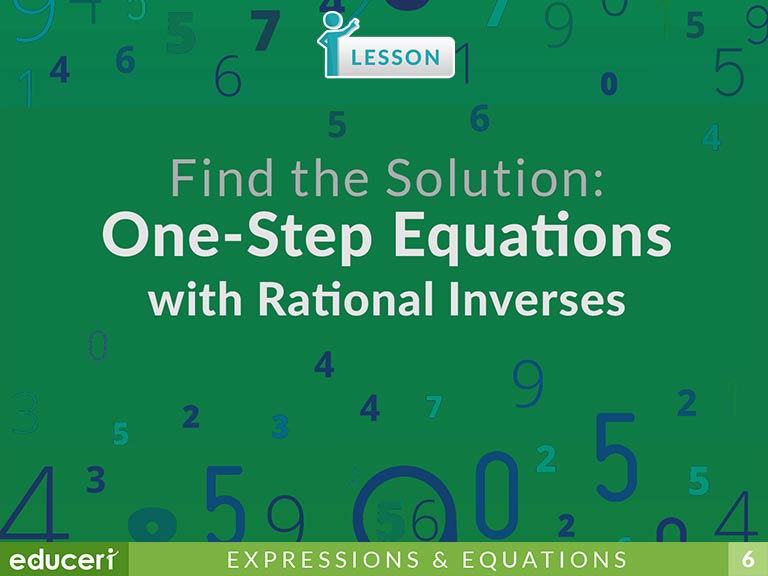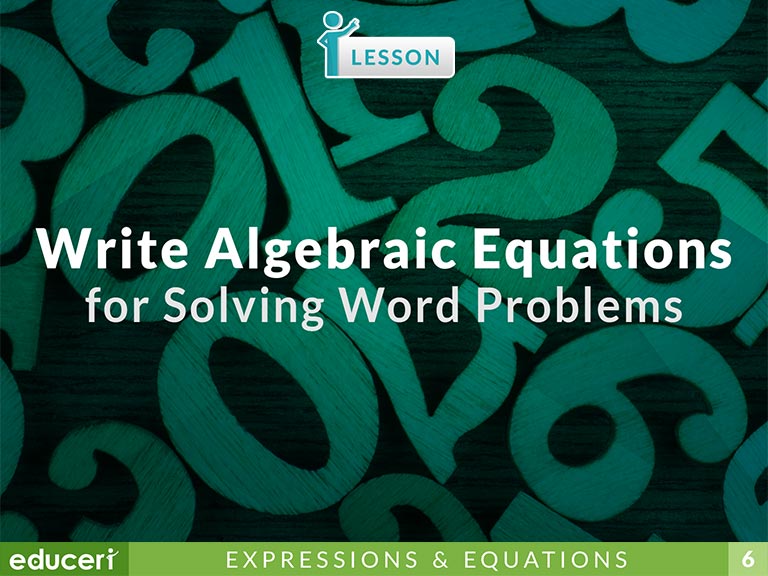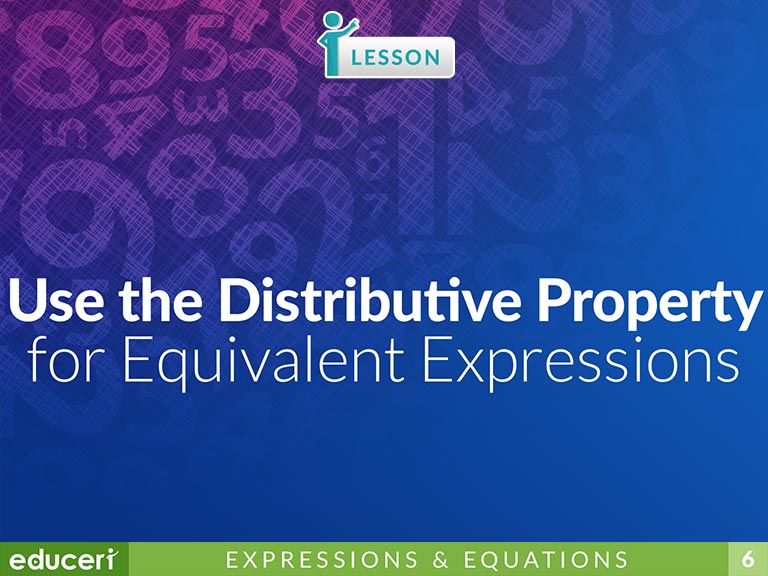All Lessons
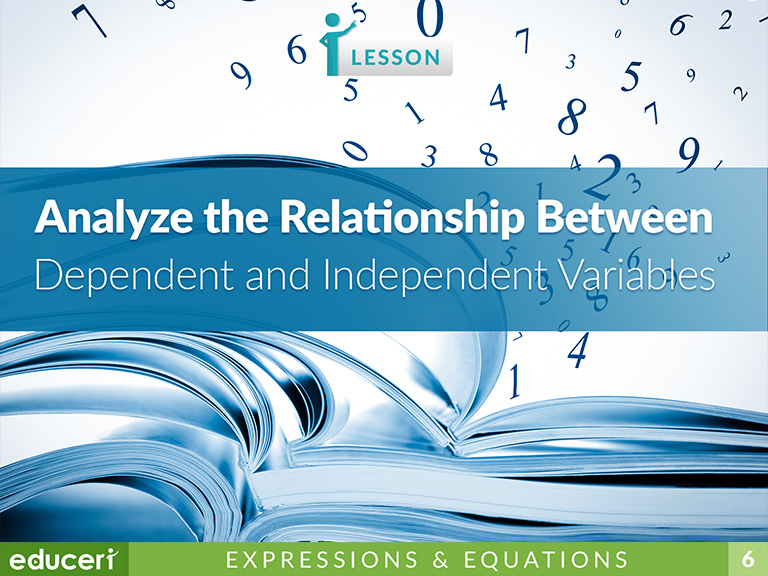
Analyze the Relationship Between Dependent and Independent Variables
This algebra and functions lesson focuses on writing the equation of a linear function. The lesson includes research-based strategies and strategic questions that prepare students for assessments. In this lesson, students identify each rule that could be applied to the x-value and result in the y-value. Then, they verify which rule is true by testing each on the next x-value in the table. Finally, they select the rule that makes the function true. In addition to the lesson, there are sixteen pages of Independent Practice and Periodic Reviews with questions modeled after current adaptive testing items.
Share This Lesson
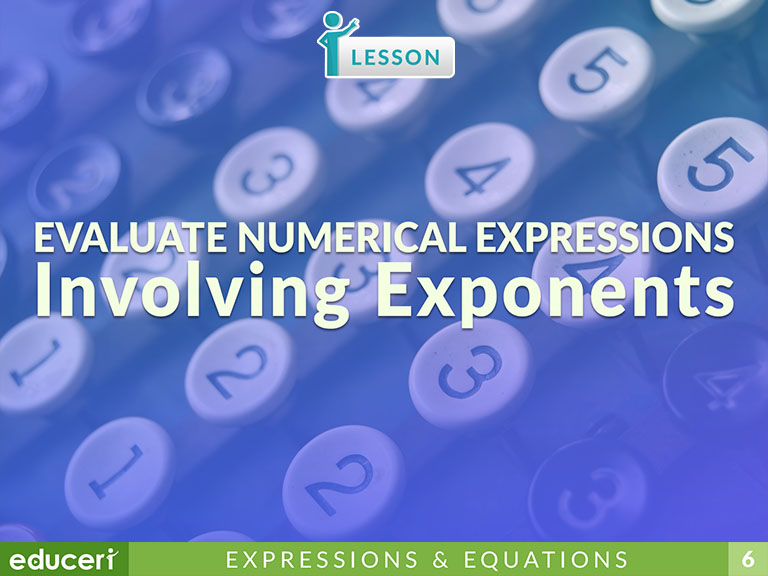
Evaluate Numerical Expressions Involving Exponents
This number sense lesson focuses on computing exponents. The lesson includes research-based strategies and strategic questions that prepare students for assessments. In this lesson, students read the problem, identifying the base and the exponent. Then, they rewrite the exponent as a repeated multiplication, find the product, and interpret it. In addition to the lesson, there are nine pages of Independent Practice and Periodic Reviews with questions modeled after current adaptive testing items.
Share This Lesson
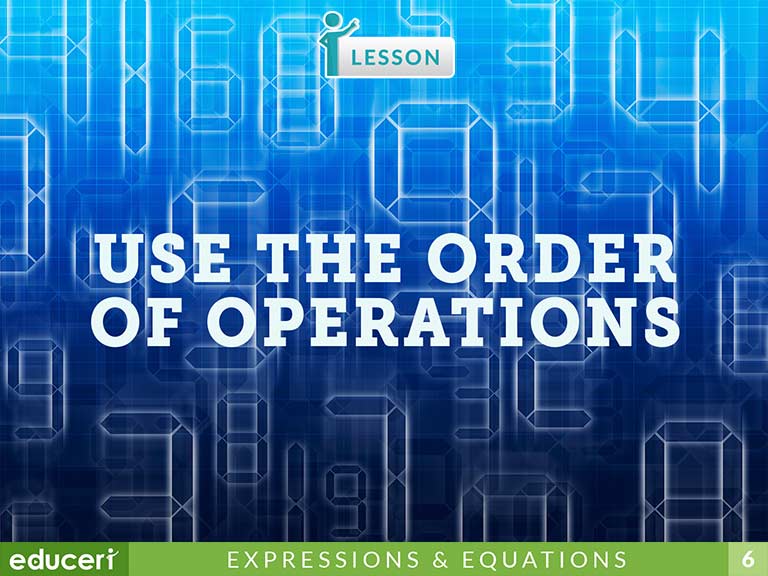
Use Order of Operations
This algebra and functions lesson focuses on using the order of operations. The lesson includes research-based strategies and strategic questions that prepare students for assessments. In this lesson, students determine which operation to perform first (using PEMDAS) and repeat the order of operations until no more can be performed. Then, they compute the final value. In addition to the lesson, there are thirteen pages of Independent Practice and Periodic Reviews with questions modeled after current adaptive testing items.
Share This Lesson

Write Equations
This algebra and functions lesson focuses on writing equations. The lesson includes research-based strategies and strategic questions that prepare students for assessments. In this lesson, students read the written sentence and identify the variable and known amounts as well as the operation clue words. Then, they determine where the equal sign will be written, interpret the written description to write the equation, and read the equation aloud. In addition to the lesson, there are five pages of Independent Practice and review with questions modeled after current adaptive testing items. EE.2.A. E.E.2A E.E.2.A.
Share This Lesson
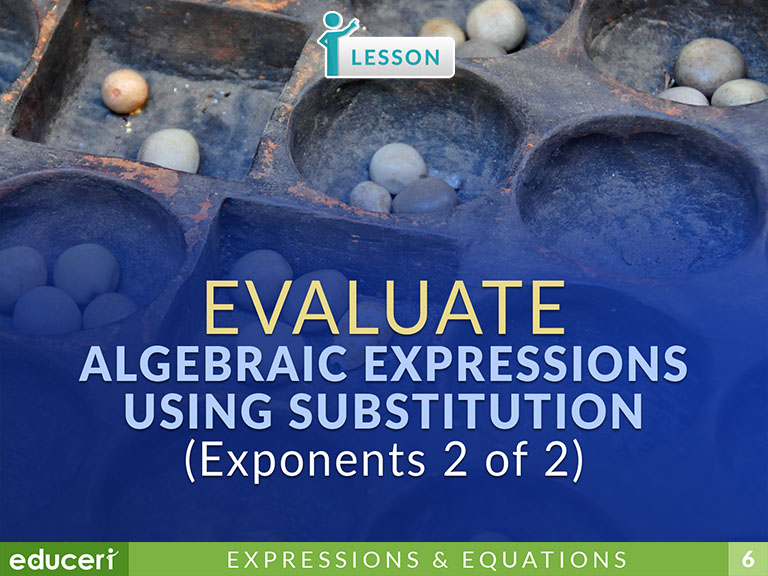
Evaluate Algebraic Expressions Using Substitution (Exponents 2 of 2)
This algebra and functions lesson focuses on evaluating expressions by using the order of operations. The lesson includes research-based strategies and strategic questions that prepare students for assessments. In this lesson, students substitute the given value of each variable into the expression. Then, they evaluate the expression by determining which operation to perform first (using PEMDAS) and repeating the order until no more operations can be performed. Finally, they compute the value and interpret the answer. In addition to the lesson, there are four pages of Independent Practice and review with questions modeled after current adaptive testing items and 12 flashcards for the order of operations.
Share This Lesson
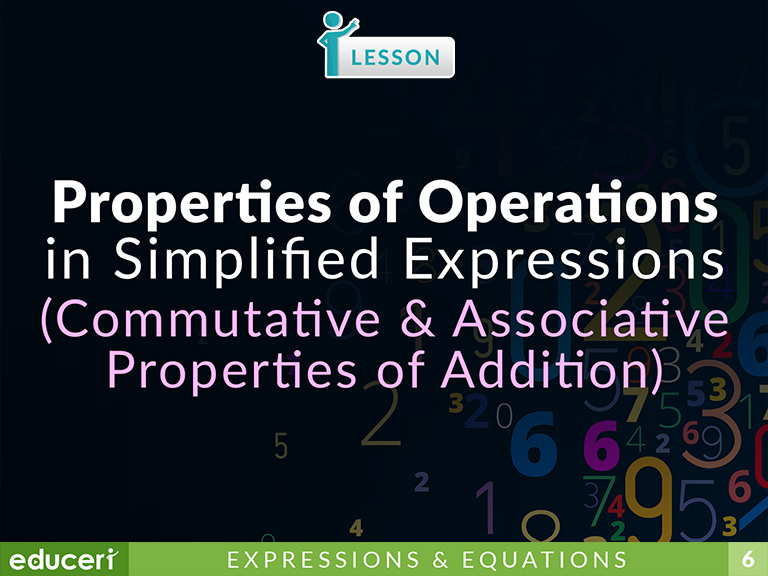
Properties of Operations in Simplified Expressions
This algebra and functions lesson focuses on identifying the commutative and associative properties in simplified expressions. The lesson includes research-based strategies and strategic questions that prepare students for assessments. In this lesson, students read the expressions as they are simplified. Then, they identify which property of addition was used to simplify them. They justify their answer by explaining that if the addends were put into different places in the expression, then it was commutative, while if the addends were grouped to add them together, it was associative. In addition to the lesson, there are eight pages of Independent Practice and review with questions modeled after current adaptive testing items.
Share This Lesson

Use Algebraic Terminology (Term, Variable, Coefficient, Constant, Degree)
6.EE.2 Write, read, and evaluate expressions in which letters stand for numbers.
6.EE.2.B6.EE.2.B Identify parts of an expression using mathematical terms (sum, term, product, factor, quotient, coefficient); view one or more parts of an expression as a single entity. For example, describe the expression 2 (8 + 7) as a product of two factors; view (8 + 7) as both a single entity and a sum of two terms.
This equations and expressions lesson covers the use of a variety of algebraic terminology. The lesson includes research-based strategies and strategic questions that prepare students for assessments. In this lesson, students describe the various attributes of algebraic expressions.
Share This Lesson
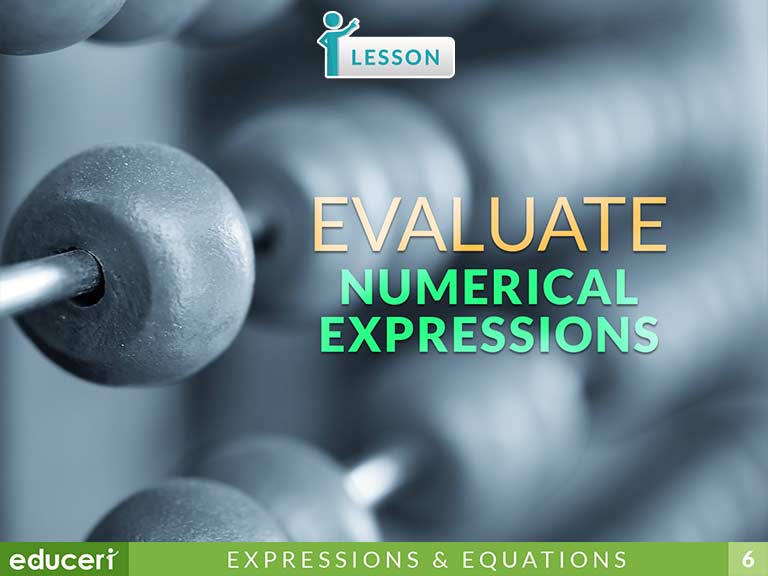
Evaluate Numerical Expressions
This equations and expressions lesson teaches students how to evaluate numerical expressions. The lesson includes research-based strategies and strategic questions that prepare students for assessments. In this lesson, students evaluate numerical expressions using the order of operations.
Share This Lesson
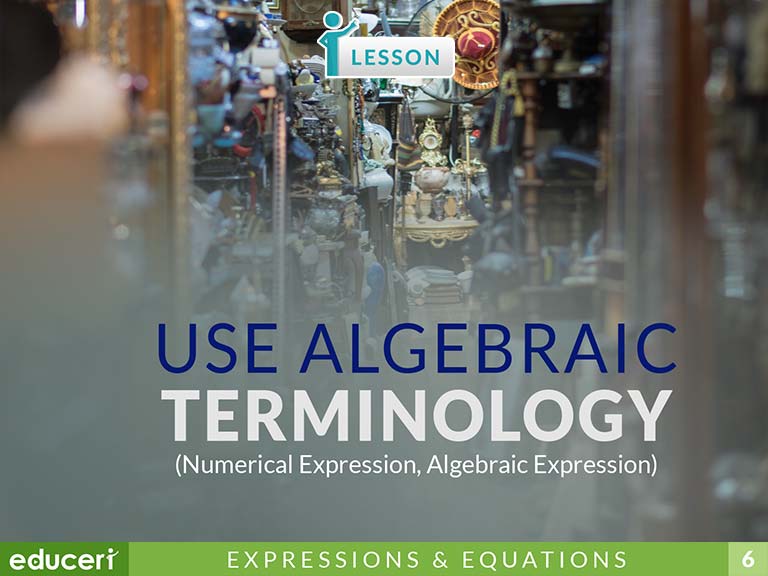
Use Algebraic Terminology (Numerical Expression, Algebraic Expression)
This equations and expressions lesson covers the use of a variety of algebraic terminology. The lesson includes research-based strategies and strategic questions that prepare students for assessments. In this lesson, students identify the difference between numeric and algebraic expressions. Students also determine whether algebraic expressions have enough information to be evaluated.
Share This Lesson
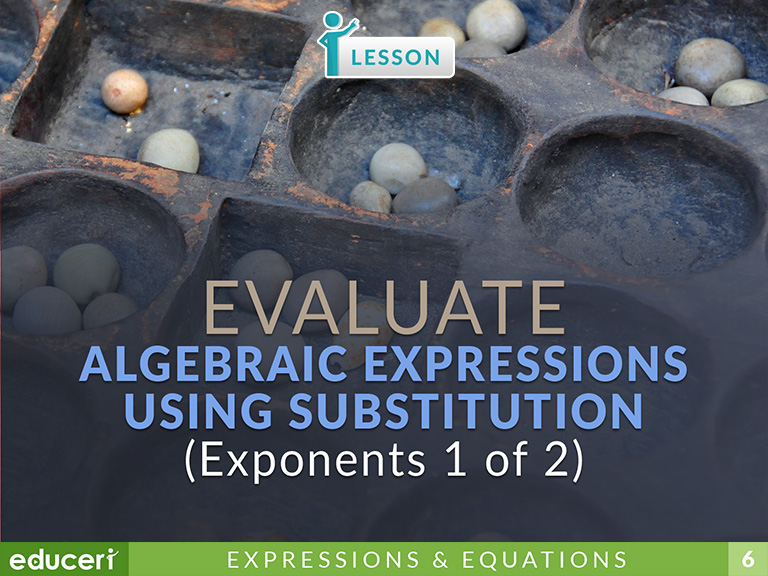
Evaluate Algebraic Expressions Using Substitution (Exponents 1 of 2)
6.EE.2 Write, read, and evaluate expressions in which letters stand for numbers.
6.EE.2.C6.EE.2.C Evaluate expressions at specific values of their variables. Include expressions that arise from formulas used in real-world problems. Perform arithmetic operations, including those involving whole-number exponents, in the conventional order when there are no parentheses to specify a particular order (Order of Operations). For example, use the formulas V = s3 and A = 6 s2 to find the volume and surface area of a cube with sides of length s = 1/2.
This expressions and equations lesson teaches students how to solve algebraic expressions. The lesson includes research-based strategies and strategic questions that prepare students for assessments. In this lesson, students substitute a given value for a variable in the algebraic expression and then solve.
Share This Lesson
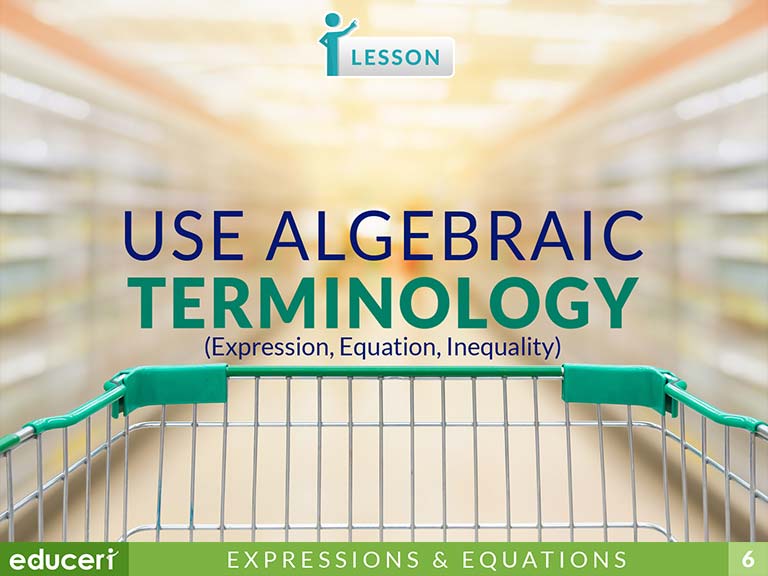
Use Algebraic Terminology (Expression, Equation, Inequality)
6.EE.7 Solve real-world and mathematical problems by writing and solving equations of the form x + p = q and px = q for cases in which p, q and x are all nonnegative rational numbers.
6.EE.86.EE.8 Write an inequality of the form x > c or x < c to represent a constraint or condition in a real-world or mathematical problem. Recognize that inequalities of the form x > c or x < c have infinitely many solutions; represent solutions of such inequalities on number line diagrams.
This equations and expressions lesson covers the use of a variety of algebraic terminology. The lesson includes research-based strategies and strategic questions that prepare students for assessments. In this lesson, students identify the difference between equations and inequalities.
Share This Lesson

Use Equation and Inequality Terminology (Inverse Operation, Solution, Verify)
6.EE.7 Solve real-world and mathematical problems by writing and solving equations of the form x + p = q and px = q for cases in which p, q and x are all nonnegative rational numbers.
6.EE.86.EE.8 Write an inequality of the form x > c or x < c to represent a constraint or condition in a real-world or mathematical problem. Recognize that inequalities of the form x > c or x < c have infinitely many solutions; represent solutions of such inequalities on number line diagrams.
This equations and expressions lesson covers the use of a variety of algebraic terminology. The lesson includes research-based strategies and strategic questions that prepare students for assessments. In this lesson, students describe the inverse operations required to solve algebraic equations.
Share This Lesson
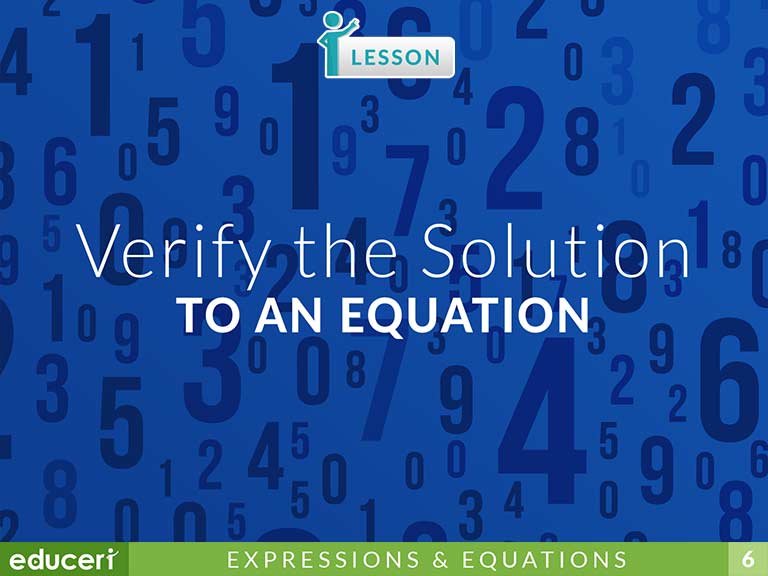
Verify the Solution to an Equation
This expressions and equations lesson teaches students how to verify the solution to an equation. The lesson includes research-based strategies and strategic questions that prepare students for assessments. In this lesson, students substitute a given value for a variable to determine whether or not the value is a solution.
Share This Lesson
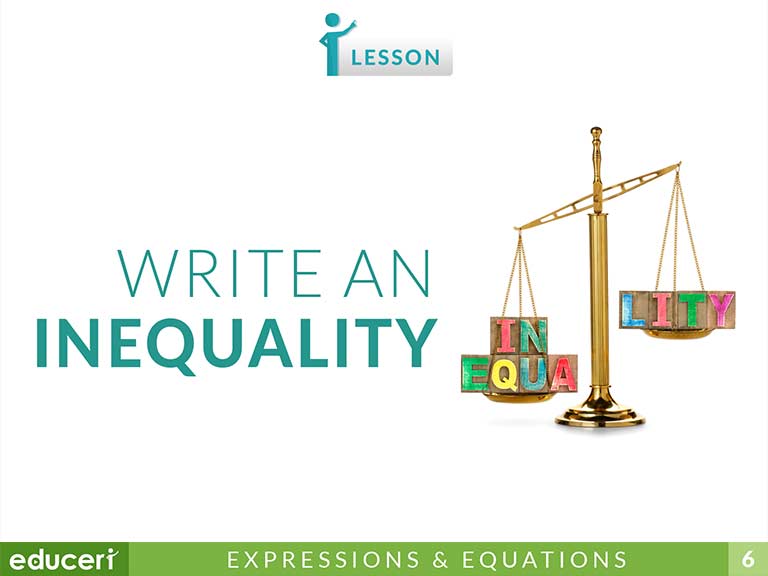
Write an Inequality
(Y10) Solve linear inequalities and graph their solutions on a number line (ACMNA236)
6.NS.7.B Write, interpret, and explain statements of order for rational numbers in real-world contexts. For example, write -3 oC > -7 oC to express the fact that -3 oC is warmer than -7 oC.
6.EE.86.EE.8 Write an inequality of the form x > c or x < c to represent a constraint or condition in a real-world or mathematical problem. Recognize that inequalities of the form x > c or x < c have infinitely many solutions; represent solutions of such inequalities on number line diagrams.
Share This Lesson
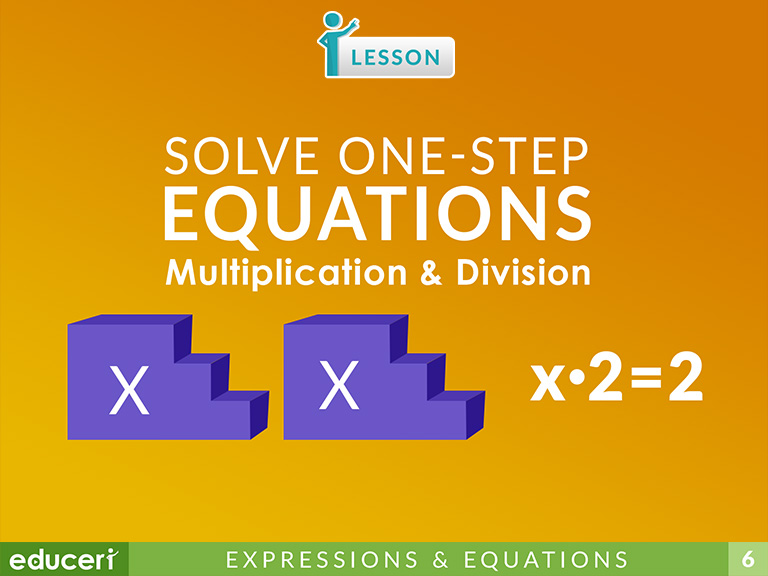
Solve One-Step Equations (Multiplication & Division)
6.EE.5 Understand solving an equation or inequality as a process of answering a question: which values from a specified set, if any, make the equation or inequality true? Use substitution to determine whether a given number in a specified set makes an equation or inequality true.
6.EE.66.EE.6 Use variables to represent numbers and write expressions when solving a real-world or mathematical problem; understand that a variable can represent an unknown number, or, depending on the purpose at hand, any number in a specified set.
6.EE.76.EE.7 Solve real-world and mathematical problems by writing and solving equations of the form x + p = q and px = q for cases in which p, q and x are all nonnegative rational numbers.
Share This Lesson
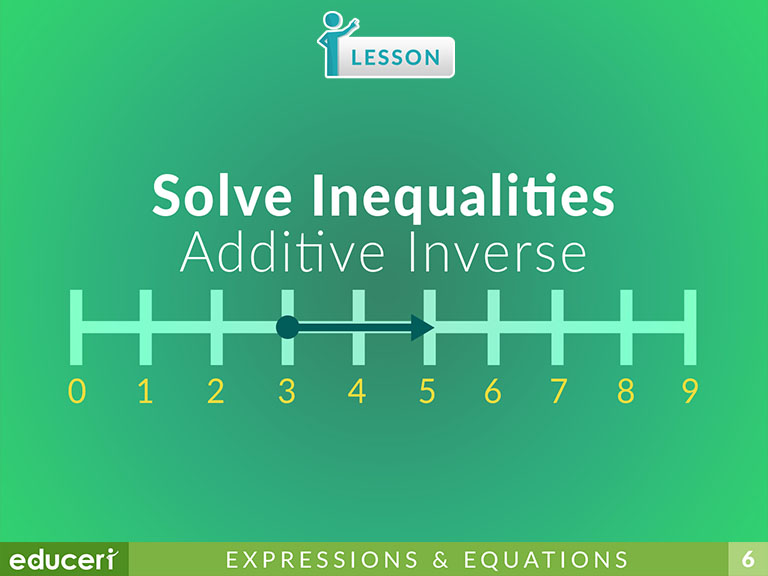
Solve Inequalities (Additive Inverse)
Share This Lesson
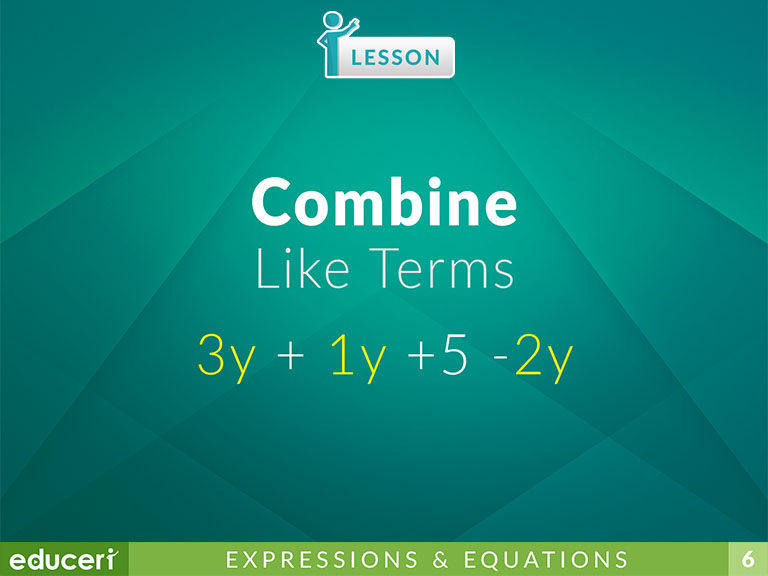
Combine Like Terms
6.EE.3 Apply the properties of operations to generate equivalent expressions. For example, apply the distributive property to the expression 3 (2 + x) to produce the equivalent expression 6 + 3x; apply the distributive property to the expression 24x + 18y to produce the equivalent expression 6 (4x + 3y); apply properties of operations to y + y + y to produce the equivalent expression 3y.
6.EE.46.EE.4 Identify when two expressions are equivalent (i.e., when the two expressions name the same number regardless of which value is substituted into them). For example, the expressions y + y + y and 3y are equivalent because they name the same number regardless of which number y stands for.
